Overview
Empowering Unrivalled Performance and Reliability for AI Storage Workloads
Data is the lifeblood of innovation in the ever-evolving landscape of Artificial Intelligence (AI) and (ML) Machine Learning. As AI models become more complex and data-hungry, the necessity for high-performance storage solutions becomes increasingly critical. Silicon Motion offers the cutting-edge MonTitan™ PCIe Gen5 SSD Development Platform with a wide range of high-performance Enterprise SSD controllers designed to accelerate the processing of vast amounts for AI generative models and data-intensive applications. Designed for next-generation data centers and enterprise storage, MonTitan™ meets the highest standards of performance, reliability, and security. With customizable turnkey firmware, these SSD solutions provide flexible to enable customers to develop application-optimized, differentiated products.
SMI also offers SATA SSD controllers and reference designs, which are the ideal platforms for new SATA SSD design for both boot and media SSDs. These are ideal replacements to lower-performance HDDs in enterprise storage, data center, and industrial storage systems, achieving reliable, high storage capacity that delivers on performance.

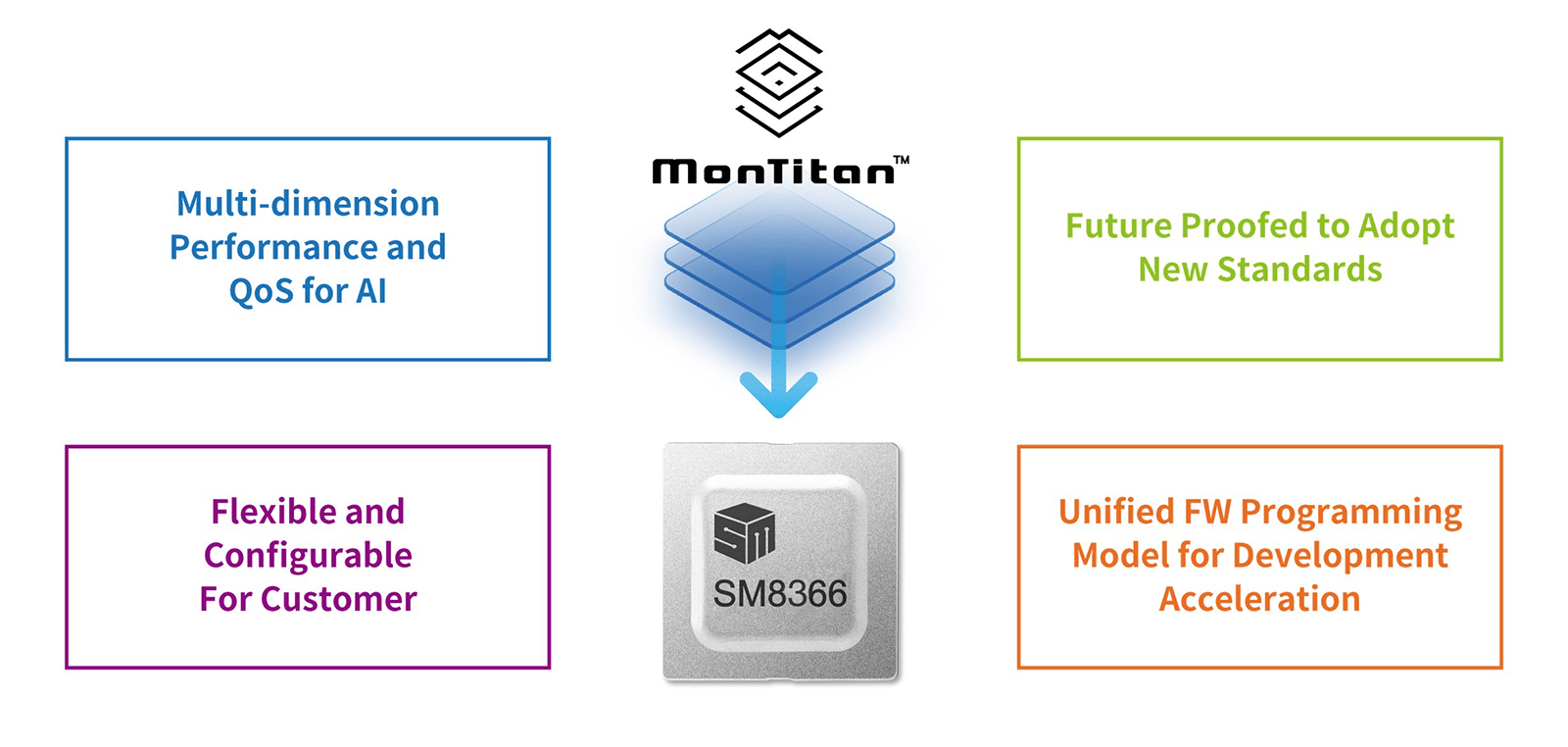
MonTitan™, PCIe Gen5 SSD Development Platform
Whether it's training graph neural networks, running predictive analytics, or executing real-time AI applications in different stages of the AI training pipeline, speed and data access efficiency is paramount.
The MonTitan™ high-performance, user-programmable PCIe Gen5 platform targeting the most challenging data center and Enterprise SSD solutions is available with the production-ready SM8366 and SM8308 controller ASICs, Turnkey and Layered Enterprise firmware, and SSD Reference Design Kits to enable customers' rapid time-to-market design providing the best total cost of ownership (TCO).
Products
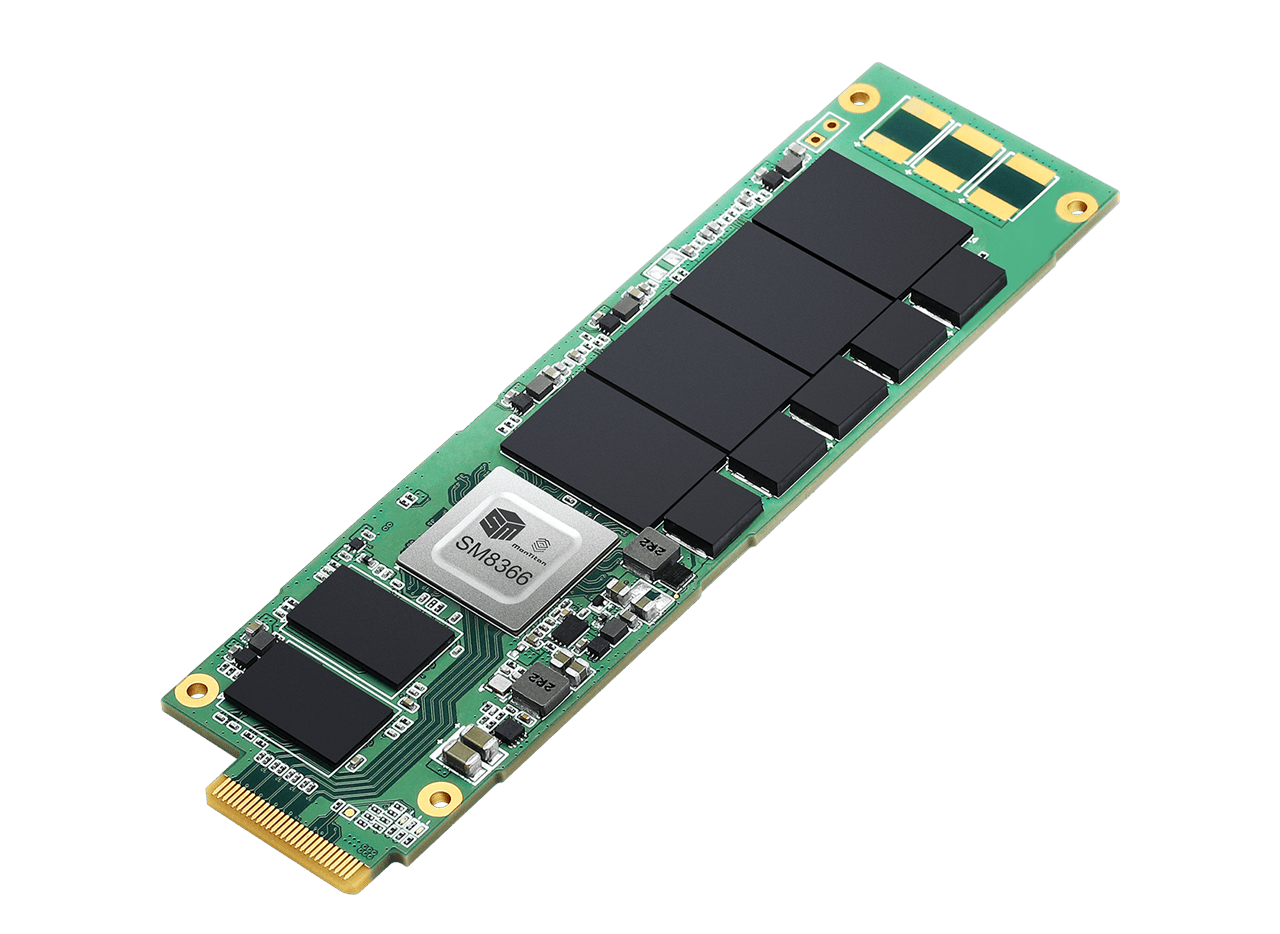
SM8366
High Performance 16 Channel PCIe Gen5 x4 NVMe SSD Controller
A true dual-ported PCIe Gen5 interface that targets Enterprise Storage and Data Center computing applications. With 16 channels running up to 2400MT/s and DDR5 interfaces, it provides industry-leading, blazing high-performance.
Performance matters with 3.5M IOPs Random performance 20-30% better than other off-the-shelf suppliers' advertised specifications! Faster model completion times for Graph Neural Networks and LLMs.
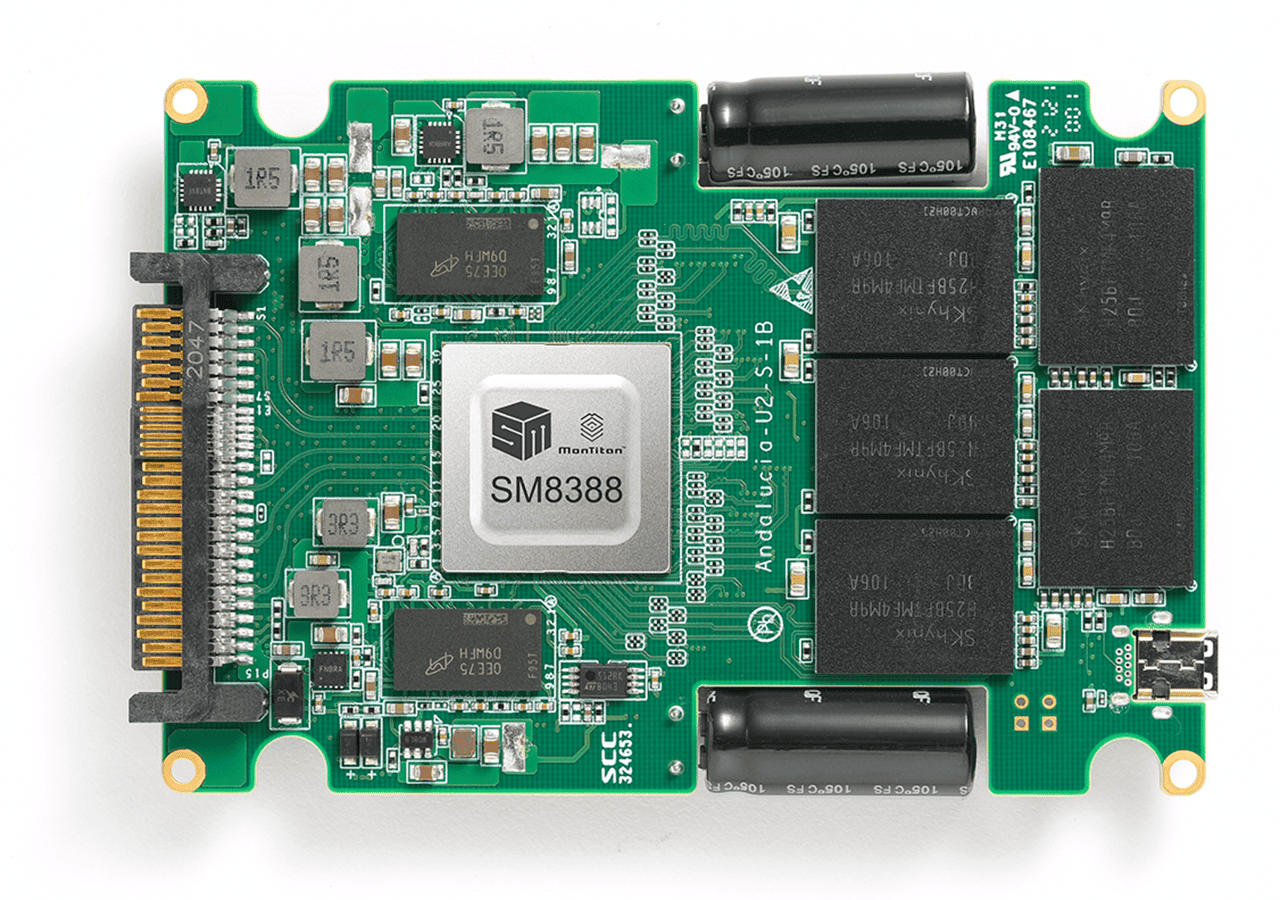
SM8388
Data Center Optimized 8 Channel PCIe Gen5 x4 NVMe SSD Controller
A dual-ported Enterprise and Data Center PCIe Gen5 x4 NVMe controller with 8 channels and support for up to 2400MT/s. It provides industry-leading blazingly fast Sequential (>14 GB/s) and Random (>2.4M IOPS) SSD performance and contains a scalable Single / Dual Channel 40bit DDR4-3200 / DDR5-4800 DRAM interface.
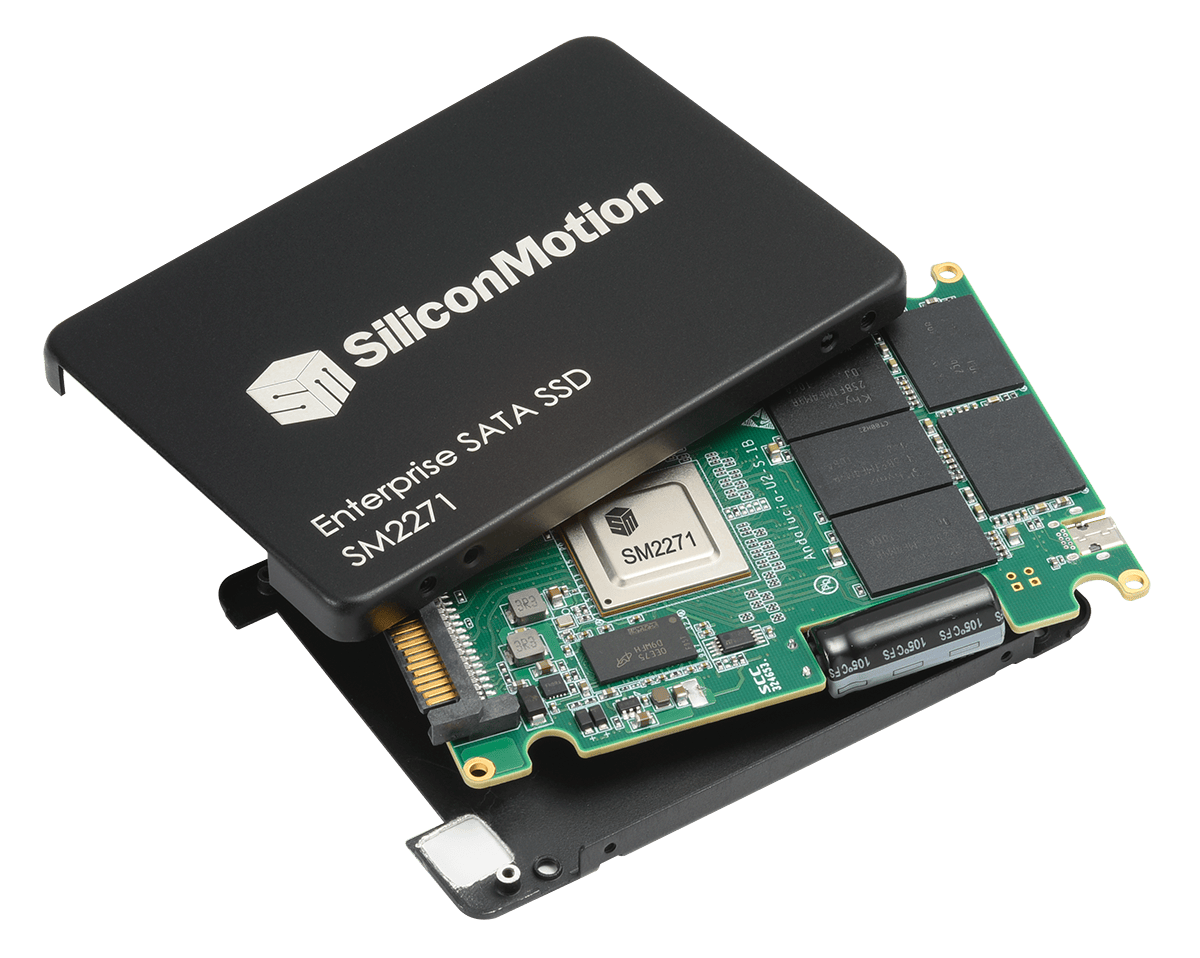
SM2271
High Capacity and Performance 8 Channel SATA SSD Controller
Offers an ideal replacement for lower-performance HDDs while providing more predictable latency than client SSDs. Enterprise SSDs based on Silicon Motion SATA controllers combine enterprise-level endurance, security, and performance for read-intensive and mixed workloads, while enabling users to retain existing datacenter infrastructure for the lowest possible total cost of ownership.
Features
MonTitan™ with SM8366 /SM8388 based Platform Features
- Full Feature Set Support for PCIe 5.0, NVMe 2.0, and OCP Data Center NVMe specifications
- Reference hardware designs supporting EDSFF and U.2/U.3 form factors, supporting SSD capacities to 128TB
Superior Performance
- > 14 GB/s Sequential I/O performance
- > Up to 3.5M IOPS (4K) Random Read
Cutting-edge Features Support
- User programmable NVMe Standard and Host Based-FTL FW
- FDP and Zone Name Space FW stacks managing device elements for Application Optimization
- 1024 Queue Pairs; 128 Namespaces
Industry Leading Security
- Self-Encrypting Drive (SED) with AES-256 and TCG Opal
- Secure Boot, Attestation, Key Wrapping and Hardware Root of Trust
Technologies
Storage performance is an important design criterion for systems running AI workloads. It affects system performance, scalability, data integrity, cost, and power requirements.
However, advancements in solid-state drive (SSD) technologies like NVMe, Zoned Namespaces, and Flexible Data Placement continue to push the boundaries of what is achievable.
PerformaShape™ User-defined QoS sets optimize
Configured in FW, PerformaShape™ is a multi-stage shaping algorithm to optimize SSD performance on a per user-defined QoS set bases. Combined with using true HW isolation technology, the SM8366 ensures maximum bandwidth performance while maximizing user-defined individual performance elements (QOS, Latency, RR/RW, power).
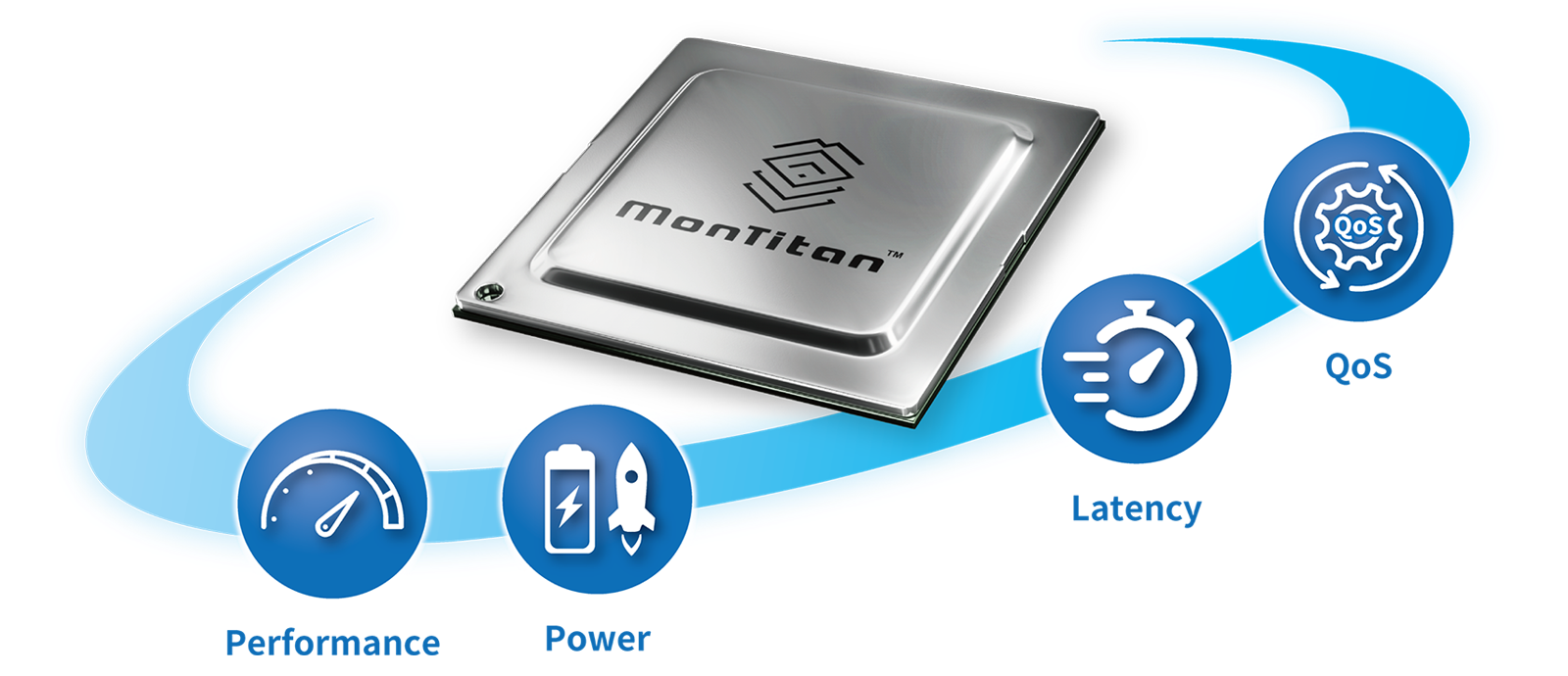
Performance Shaping Engine - Dual Stage Shaping
Dual Stage Shaping
- Stage 1: Per QoS Set/IO Type set shaping to meet QoS set level performance requirement.
- Stage 2: Per Device/IO Type shaping to meet device level performance requirement.
Application Configurable
Host (AI server or AI storage server) can define a QoS set and configure the QoS set dynamically for a specific application running for specific workloads along the AI data pipeline.
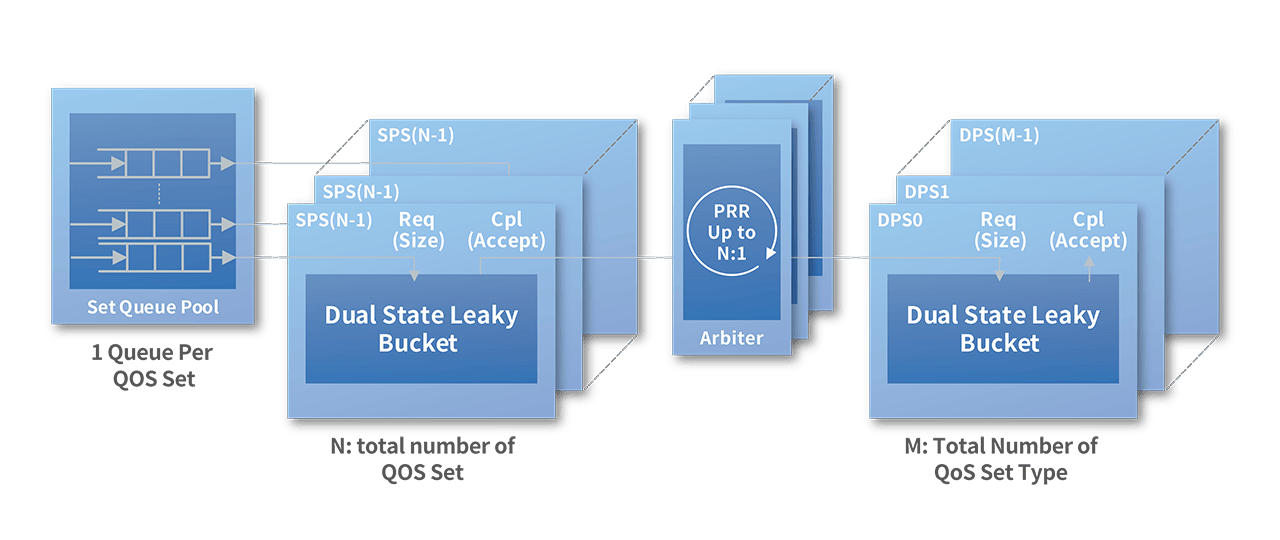
MonTitan Data Placement Technology for AI Storage Pipeline
Optimizing direct data placement technologies: Zoned Namespaces (ZNS) and Flexible Data Placement (FDP) shorten latency and improve performance and endurance for AI data access in large-capacity storage.

- NVMe FDP (Flexible Date Placement) for mixed random and sequential access optimization
- Reduces write amplification near to 1 improving:
- Write Performance
- Endurance
- User Capacity


8th Generation NANDXtend™ with On Disk Training Algorithm Supporting 3D TLC and QLC NAND
ECC (Error Correction Code) capabilities to address the challenges posed by QLC NAND
- Shorten ECC timing to boost performance and maximize power efficiency
- Channel Processor HW Engines for NAND Machine Learning

Data Integrity and Security
Privacy Protection
- Multi-Factor Authentication (MFA)
Preventive Measures
- Tamper-Resistant Hardware
- Advanced Encryption Standard
- IntelligentGuard™: Data Encryption with Authenticated Firmware Protection
Data Integrity
- End to End Data Protection
- IntelligentScan™ with DataRefresh™
Downloads
White Paper
| Document | Download |
|---|---|
| Transforming AI Data Pipelines with Advanced SSD Technology |  |
Blog
Selection Guide
| Filters |
|
||||
|---|---|---|---|---|---|
| Filters | |||||
|
|
|
||||
|
{{ findOption(head.id, item.options, '--') }} |